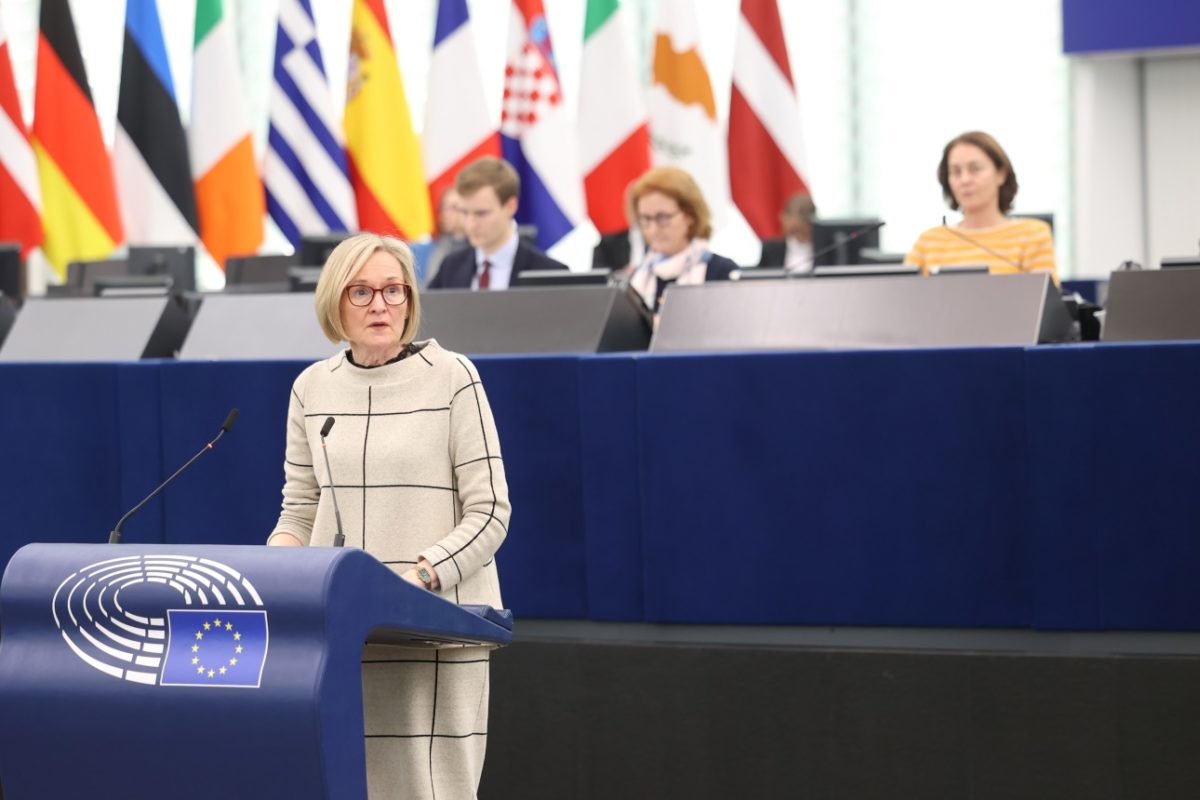Tech
The PV Review, Q1 2024: Europe in crisis, First Solar on the march, the ‘downturn’ strikes

Europe in crisis
Following the closure of a number of major European manufacturing bases in late 2023, the ESMC warned of “irreversible negative consequences” for the continent’s solar manufacturing industry in an 18 January press release. Without “robust emergency measures that are powerful and effective”, the statement said, “there will be no industry to count on in 2030”.
At the time, the EU was in the process of passing its Net Zero Industry Act (NZIA) and Forced Labour Ban, both of which seemed primed to bring relief for an industry struggling against mountains of Chinese imports at prices far lower than they could hope to compete with. However, the ESMC’s warning called for immediate action to prevent the remaining European manufacturers crumbling before those support schemes arrived.
On 8 February, Mairead McGuinness, European commissioner for financial stability officially acknowledged the “crisis” facing the solar manufacturing industry but refrained from implementing any concrete measures to shore up the parts of the industry still standing. In part, this was down to the continent’s reliance on Chinese imports for its energy deployment targets. January had seen Swiss heterojunction (HJT) manufacturer Meyer Burger abandon its module manufacturing facility in Germany, following the announcement of closures in late 2023 by both NorSun and the REC Group.
In March, we spoke with the ESMC secretary general, Johan Lindahl, about what the industry needed to survive. Our discussion followed a 4 March address from European commissioner for energy Kadri Simson, where she committed to “work on a solar power pledge … to take concrete action to support our production here in Europe.” Lindahl reiterated the need for direct, immediate financial support for Europe’s existing manufacturers, as well as plans to support new operations from companies like Carbon and Holosolis.
First Solar flexes its muscles
In stark contrast to the fading European silicon solar manufacturers, CdTe thin-film module manufacturer First Solar came flying out of the gate in Q1 2024.
On 2 January, we reported that the company had signed US$700 million worth of tax credit transfer deals for the Section 45X advanced manufacturing credit, which First Solar said was the first transaction of its kind in the solar industry.
Nine days later, the company began producing Series 7 CdTe modules at a new 3.GW manufacturing facility in India. The company’s sixth manufacturing plant represented another US$700 million in funding, US$500 million of which it said came from US International Development Finance Corporation funding.
And then, two weeks later on 22 January, First Solar opened a new distribution centre in the US state of Ohio. The site would support its manufacturing operations in the state and pave the way for a further gigawatt of production capacity to be added over the year.
This activity culminated in a report that First Solar commissioned from the Kathleen Babineaux Blanco Public Policy Center at the University of Louisiana at Lafayette, which found that the company could ultimately add US$10 billion in product value to the US economy by 2026. First Solar’s plans for 14GW of US CdTe module manufacturing capacity by 2026 would make it the largest module manufacturer in the Western world and by far the largest solar producer in the US.
Alongside its headline-grabbing expansion, in Q1 First Solar began to lean more heavily into the political discourse surrounding the US solar manufacturing space.
CEO Mark Widmar told a Senate Finance Committee in March that the government should impose measures to prevent Chinese solar manufacturers from benefitting from US tax credits. A month later, in Q2, the company would be a leading force behind new antidumping and countervailing duty (AD/CVD) tariff investigations on solar cells shipped to the US from Southeast Asia.
In late 2023, PV Tech’s head of research, Finlay Colville, had forecast that First Solar could be the only major solar manufacturer to be profitable in 2024, as the silicon-based manufacturers began to contend with low prices and oversupply. Its operational expansions and early efforts to stymie its silicon competitors in Q1 supported this prediction, though later events in the year would complicate things.
Jinko Chairman acknowledges “downturn”
In February 2024, the chairman of JinkoSolar, David Lee, spoke with us about the challenges facing the solar manufacturing sector. Prices had tumbled over 2023 as production capacities had massively outstripped demand, leading to intense competition among the major players. Lee said it is “crucial to stay confident”, but the seeds sown early in the year have borne challenging fruit through the rest of 2024.
In March, fellow major Chinese solar manufacturer LONGi urged the Chinese government to crack down on the “unreasonably low” module prices the industry was experiencing. Just two weeks later, the firm was rumoured to be laying off up to 30% of its workforce.
Financial results for the first quarter among the largest Chinese manufacturers started to set a trend for the year: high shipments and lowered revenues.
This echoed up the whole supply chain, and in Q1 we saw the start of what would become a sustained issue in the Chinese polysilicon sector, inextricably tied to the fates of module producers. Bernruter Research had predicted a “shakeout” and consolidation in the polysilicon sector in late 2023, where major players would double down despite the challenging market, forcing smaller companies out.
In Q1, Daqo New Energy, a major polysilicon producer, announced that it would expand its polysilicon production volume by “40-50%” in 2024, despite revenues in 2023 collapsing as the price of polysilicon tanked.
End-of-life concerns
While the module manufacturing industry was chiefly concerned with how – and for what price – it would produce new panels, our Q1 2024 headlines were increasingly recording announcements about module recycling and disposal efforts.
In 2023 and 2024, the global capacity of solar PV exploded, becoming the dominant renewable energy technology for the foreseeable future. At the mid-point between those two years, the industry started to consider what to do with the billions of panels currently on the ground when they reach the end of their serviceable life.
Chief among the headlines for Q1 was US company Solarcycle. The firm announced module recycling deals with a number of major US-based manufacturers including Qcells and solar cell and module producer Silfab. In February, Solarcycle also announced plans to build a recycled solar glass production facility in the US state of Georgia, which it said would be a significant step in building a sustainable and circular solar supply chain. PV Tech Premium spoke with Solarcycle about the move, which CEO Suvi Sharma called “a significant new step”.
Outside of the US, Europe also made moves on the recycling front. A March amendment to its Waste from Electrical and Electronic Equipment (WEEE) Directive saw the EU make solar manufacturers responsible for recycling their products at the end of their usable lives.
This move could help to address the central problem with solar PV recycling: they are built to last. A recycling plant will not process modules deployed around the time of its construction for at least 20 years, in most cases, which complicates the business case and logistics of recycling. We also spoke with the European PV recycling operation PV Cycle about these problems.










